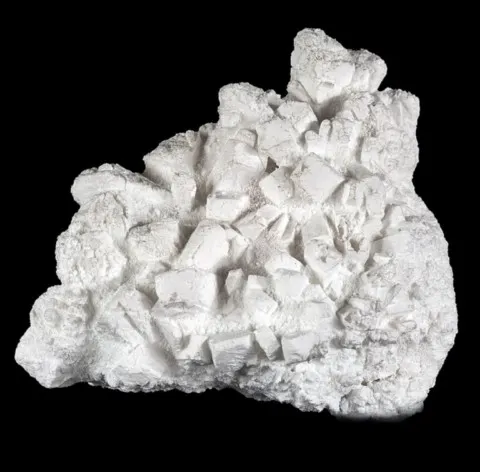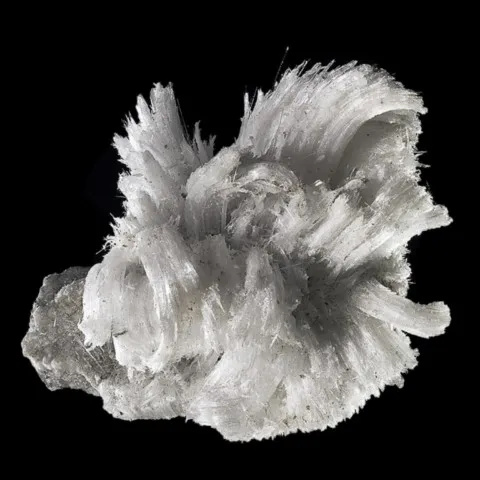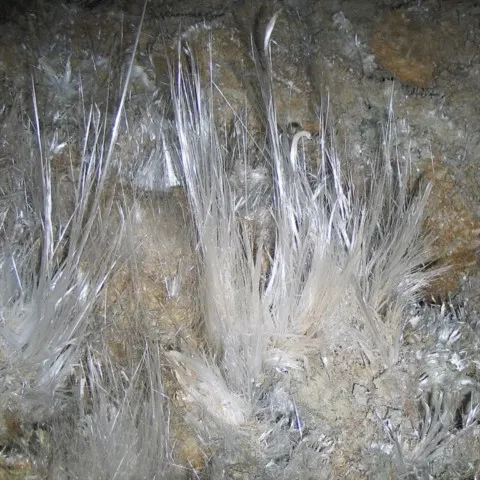EPSOMITE
Class : Sulfates, chromates, molybdates
Subclass : Hydrated sulfates
Crystal system : Orthorhombic
Chemistry : MgSO4 7H2O
Rarity : Common
Epsomite is a primary mineral of salt deposits, thermal springs and volcanic fumaroles. Its genesis is comparable to that of mirabilite which is its sodium equivalent ; in this case it accompanies halite and many other chlorides and sulfates. Epsomite can also be of secondary origin : it is then a reaction product between sulfuric acid formed by oxidation of sulfides and the surrounding rocks, it is then associated with numerous other iron and aluminum sulphates. By (artificial) replacement of Mg with other metals, solid solutions are obtained with morenosite (nickel-bearing), and goslarite (zinc-bearing). By dehydration and loss of a water molecule, it is transformed into hexahydrite. It owes its name to its location of discovery : Epsom in England. Epsomite sometimes appears in magnificent elongated prismatic crystals with often hemihedral endings. Ordinarily, however, it constitutes efflorescences or fibrous to acicular masses, sometimes stalactites, with a silky shine. Epsomite is colorless, white to yellowish, sometimes pink or greenish. After uses in medicine in ancient times, epsomite is today confined to a wiser role as an accessory source of magnesium.
Main photo : Epsomite from Hattorf Potash Works, Phillippsthal, Hesse, Germany © David J. Eicher
Epsomite in the World
Twinning
A twin is known on {110} but rare.
Fakes and treatments
No fake listed for this mineral species.
Hardness : 2 to 2.5
Density : 1.67
Fracture : Conchoidal
Streak : White
TP : Translucent to transparent
RI : 1.433 to 1.461
Birefringence : 0.028
Optical character : Biaxial -
Pleochroism : None
Fluorescence : None
Solubility : Water
Magnetism : None
Radioactivity : None





